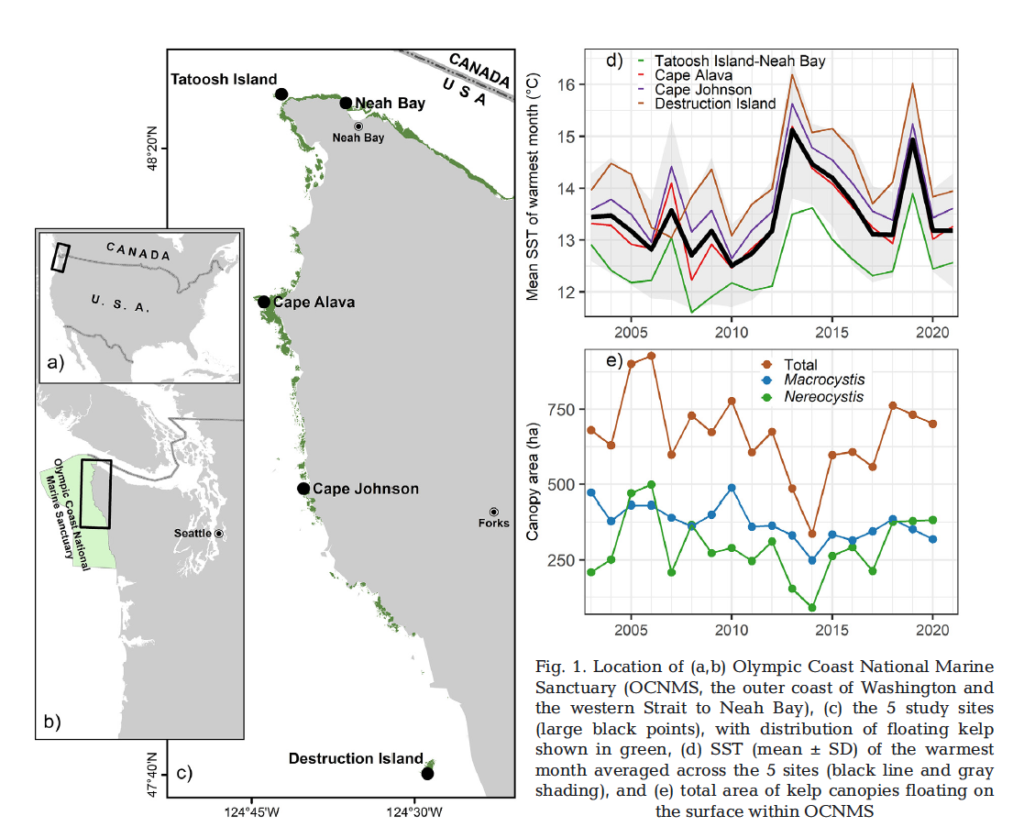A new publication in the peer-reviewed journal Marine Ecology Progress Series (MEPS) presents data on the response of kelp forest communities within Olympic Coast National Marine Sanctuary, off the coast of Washington. Lead author Dr. Nick Tolimieri and colleagues from NOAA’s National Marine Fisheries Service and the Office of National Marine Sanctuaries collected SCUBA-based survey data on fishes, invertebrates, and algae from five nearshore sites along the coast of Washington.
Canopy-forming kelps are foundation species in many coastal ecosystems, but kelp-forest communities are subject to abrupt state changes caused by environmental drivers and trophic dynamics. We examined changes in kelp communities at 5 sites along the Olympic Coast of Washington State, USA, during and following the recent perturbations of anomalous warm-water events and sea star wasting syndrome (SSWS). Anomalously warm water in 2013 and 2014 corresponded with a loss of approximately 50% of Macrocystis pyrifera and Nereocystis luetkeana canopy. However, the canopy quickly recovered, and stipe density increased after 2015. Purple sea urchins Strongylocentrotus purpuratus increased in density 164-fold, largely at one site, but this increase was first observed in 2017 and peaked in 2019, after the warm period. Sea stars did not show recovery from SSWS, with several species including Pycnopodia helianthoides continuing to decline. The majority of variation in assemblage structure occurred at the site level for kelps, macroinvertebrates, and fishes, while year explained most of the variability for juvenile rockfishes Sebastes spp. We did not see strong top-down effects of urchins on kelp, suggesting that top-down impacts were not dominant regionally during this period. In contrast, we found evidence for a bottom-up influence of kelp habitat on juvenile rockfishes, as rockfish recruits occurred with higher probability where kelp stipe density was higher. Our analyses highlight the importance of spatial variation in structuring changes in kelp forest communities associated with disturbance and suggest that it is essential to ensure the protection of a diversity of kelp forests.
